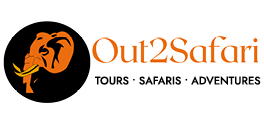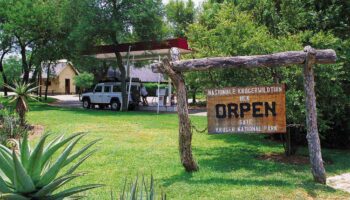The most famous wildlife sanctuary in southern Africa is also the best developed for tourism with fantastic safari infrastructure (paved roads, lodges, rest camps, picnic sites, waterholes and hides) across its vast 19,000 square kilometers. The gigantic park (about the size of Wales) with diverse wildlife, including all the Big five, is big enough to offer something for everyone. Hundreds of other mammals ( blue wildebeest, zebra, bushbuck, cape buffalo, eland, giraffe, greater kudu, hippo, impala, hartebeest, warthog, sable antelope, cheetah, wild dog, spotted hyena etc.) make their home here, as do diverse bird species (over 517 recorded) such as vultures, eagles, storks, kori, bustard, ground hornbill, and fishing owl. The park has a pride of over 1,500 lions (the highest in one single park in Africa) and offers sanctuary to the highly endangered rhinos. Mountains, bush plains and tropical forests are all part of the landscape.
The Kruger National Park is an excellent self-drive destination. The excellent road network means that most areas of the park are accessible with two-wheel drive vehicles making it arguably the cheapest and uniquely suitable for first time safari goers of all Africa’s major parks. Game drives, bush walks, foot safaris, wilderness trails and even a self-drive eco trail, are some of the ways in which to enjoy the magnificent scenery and wildlife of the Kruger National Park. In terms of the range of accommodation offered within Kruger, no national park in the world quite lives up to the same level of service. The park has a large number of rest camps, bushveld camps, and lodges all run by the South African National Parks Board. But it is the luxurious privately-run lodges that steal the show when staying in the Kruger National Park, as a safari is transformed into something more like an experience – the pace of life slows to a leisurely tempo, your every need is catered for, and extravagance is not spared. All this in the wild heart of Africa.

